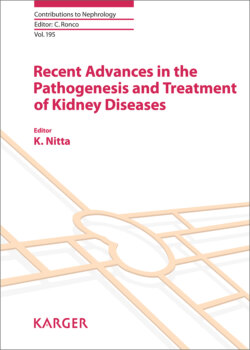Читать книгу Recent Advances in the Pathogenesis and Treatment of Kidney Diseases - Группа авторов - Страница 22
На сайте Литреса книга снята с продажи.
Mechanism of Rituximab Action
ОглавлениеCD20 is a hydrophobic transmembrane protein, with a molecular weight of approximately 35 kD, located on pre-B and mature B cells, and is not found on other cell types or free in the circulation [6]. CD20 regulates an early step in the activation process for cell cycle initiation and differentiation and possibly functions as a calcium ion channel. Rituximab is a chimeric murine/human monoclonal immunoglobulin G1 antibody that targets CD20, which is a B-cell differentiation marker.
As shown in Figure 1, 3 different mechanisms have been proposed for the elimination of B cells by rituximab, including complement-dependent cytotoxicity, antibody-dependent cell-mediated cytotoxicity, and stimulation of the apoptotic pathway. Complement-dependent cytotoxicity is most likely the dominant mechanism in vivo. Rituximab improved abnormalities in B-cell homeostasis, with a decreased proportion of autoreactive memory B cells and reconstitution of the B-cell lineage. Therefore, the rituximab-induced depletion of memory B cells may also prevent the activation of autoreactive T cells through interactions with B cells, resulting in the down-regulation of CD40L on CD4-positive T cells and implying that rituximab may improve the disease course by resetting the immune response (Fig. 2).
Fig. 1. Schematic illustration of the mechanism of rituximab action.
Fig. 2. Rituximab reduces memory B cells and induces the reconstitution of the B-cell lineage, leading to clinical efficacy in inflammatory autoimmune diseases.
